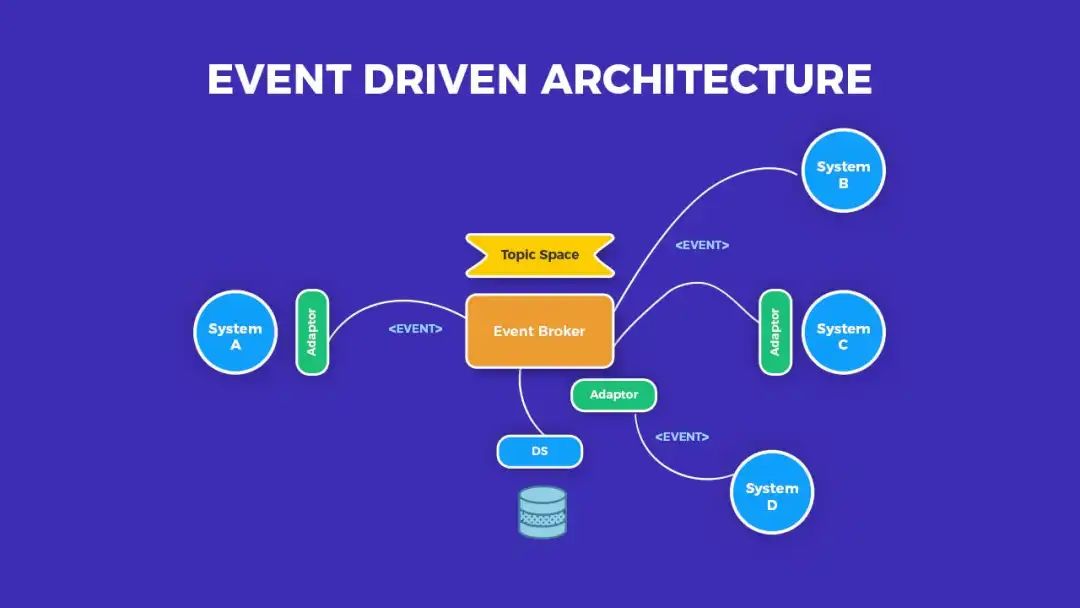Event-driven architecture vs. RESTful architecture: comparison and selection of communication modes

Event-driven architecture vs. RESTful architecture: comparison and selection of communication modes

1. Communication style
Event-driven architecture (EDA) is an asynchronous communication style in which components communicate by generating and consuming events.
Events are messages that represent significant changes or events in a system and are distributed to interested components. This communication model allows decoupling and dynamic interaction between different parts of the system.
Components act as producers or consumers of events, publishing events to a central event bus or message broker, and subscribing to events of interest. The asynchronous nature of EDA allows components to run independently, promoting loose coupling and flexibility of the system architecture.
This style is particularly advantageous in scenarios where various components need to react to the same event, favoring modularity and extensibility.
RESTful architecture, on the other hand, follows a synchronous communication model based on Representational State Transfer (REST) principles.
In a RESTful architecture, communication is usually request-response oriented. The client makes an HTTP request to a specific endpoint of the server, and the server responds with the requested resource or performs a specified operation.
Communication is stateless, meaning each request from the client contains all the information the server needs to complete the request.
While RESTful APIs provide a simple and well-defined communication pattern, they are inherently synchronous, resulting in more direct and immediate interactions between client and server.
2. Flexibility and scalability
EDA provides flexibility by allowing different components to react independently to the same event.
Because events are decoupled from their producers and consumers, each component can evolve and scale independently without affecting other components.
This flexibility is particularly beneficial in scenarios where multiple components need to react to a common trigger and the system needs to adapt to changing requirements.
The asynchronous nature of EDA also helps with scalability because components can handle events concurrently, enabling dynamic expansion based on demand.
Although the RESTful architecture provides a simple request-response model, it is less flexible and scalable than EDA.
In a RESTful API, the interaction between client and server is usually closer, and changes in some parts of the system may require adjustments in other areas.
Scaling can be a challenge, especially if there are a lot of direct client-server interactions, as each interaction requires dedicated resources, which can cause scalability issues.
3. Coupling and independence
EDA promotes loose coupling between components, helping to enhance independence.
Components in an EDA system only need to understand the events they produce or consume, and changes to one component do not necessarily affect other components.
This loose coupling allows for a more modular and maintainable system, where updates or changes to one part of the system have little impact on other components.
Each component can be developed independently, fostering a high degree of independence.
In contrast, RESTful architecture has a higher degree of coupling between client and server.
The client needs to know the specific structure of the API and its endpoints, creating a dependency between the client and the server.
Changes to the API may impact clients, requiring client code to be updated to ensure compatibility. This tighter coupling may reduce the independence between components relative to EDA.
4. Delay
EDA introduces asynchronous communication, which may result in increased latency compared to synchronous methods.
However, this delay is usually acceptable in situations where real-time response is not critical.
EDA is very suitable for situations where multiple consumers process events in parallel, which can improve the efficiency of overall system performance.
RESTful architecture includes synchronous communication, resulting in lower latency in direct request-response interactions.
The system can provide more immediate responses, making RESTful APIs ideal for real-time applications where low-latency communication is critical.
5. Application scenarios
EDA is particularly useful when different parts of a system need to react to the same event.
It is commonly used for event sourcing, real-time analytics, and event-driven microservices architectures. EDA's modularity and scalability make it suitable for systems with changing workloads and requirements.
For example, in financial systems, EDA can be used to trigger various actions based on market events or user transactions.
RESTful architecture works well in situations where the client needs to get specific data from the server or perform a specific operation.
It is commonly used in Web APIs, client-server applications and traditional web applications. These architectures are ideal for scenarios that require a simple request-response model.
For example, in e-commerce applications, RESTful APIs can be used to retrieve product information, process orders, and manage user accounts.
Summarize
In summary, the choice between event-driven architecture and RESTful architecture depends on the specific requirements and characteristics of the system.
EDA provides asynchronous, decoupled communication and is suitable for scenarios that require flexibility, modularity, and scalability.
The RESTful architecture provides more direct, synchronous interaction between clients and servers, and is suitable for scenarios where simplicity and low-latency communication are important.
Each architecture has its advantages, and careful consideration of system requirements will guide the choice between the two approaches.